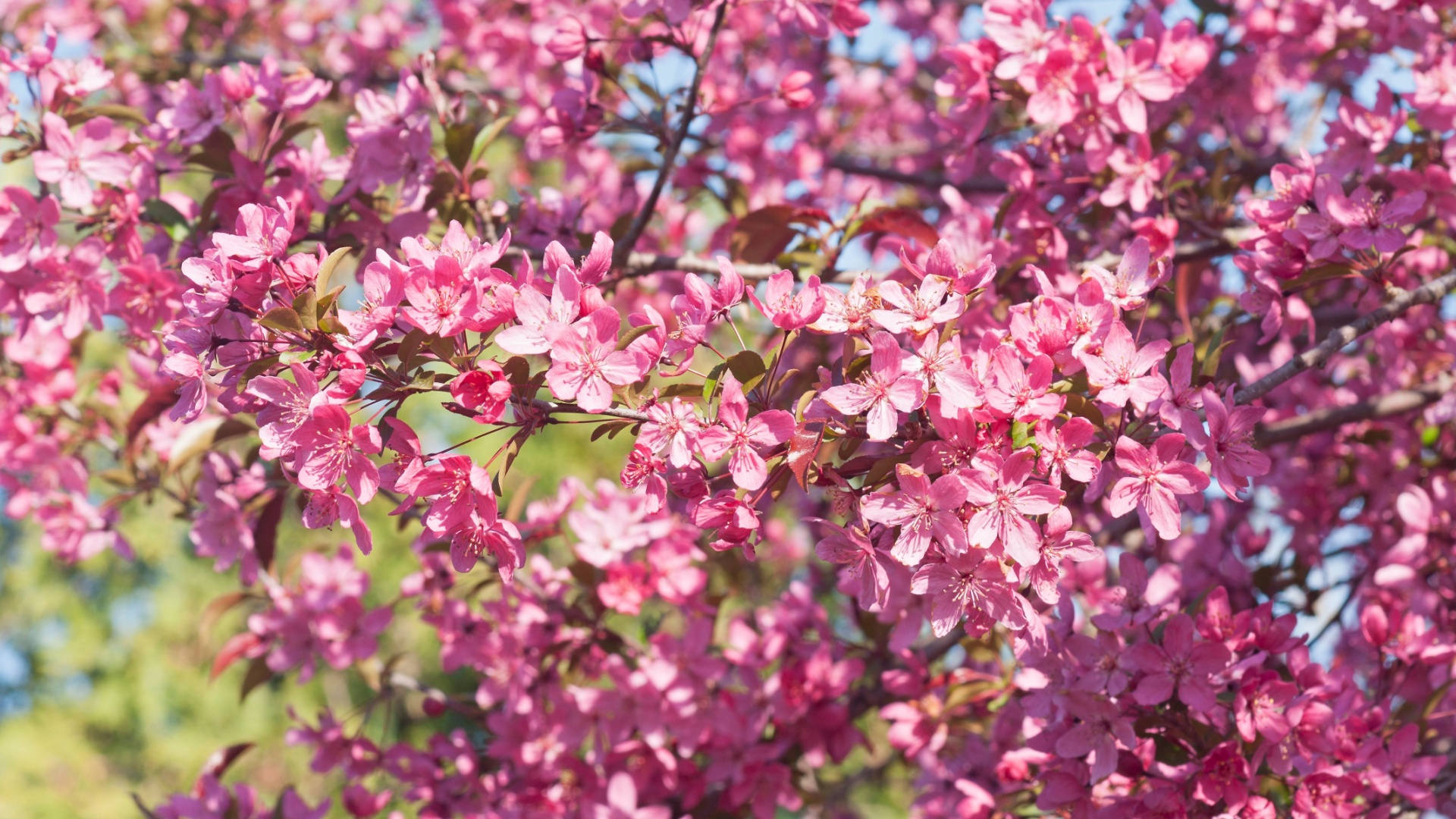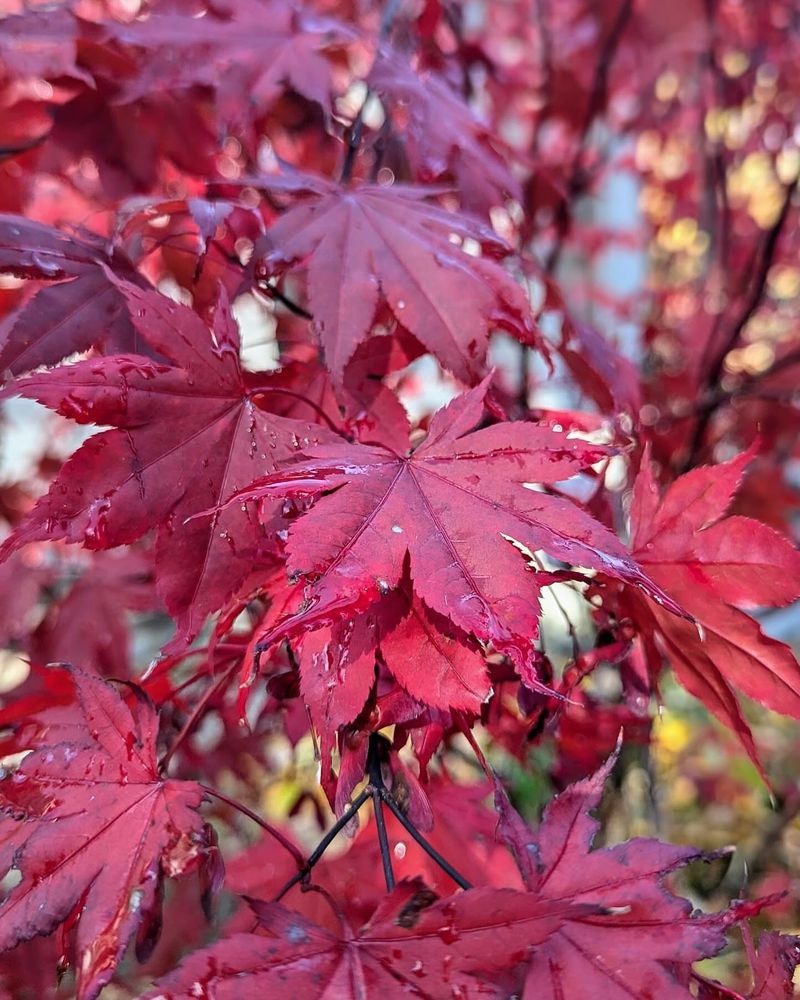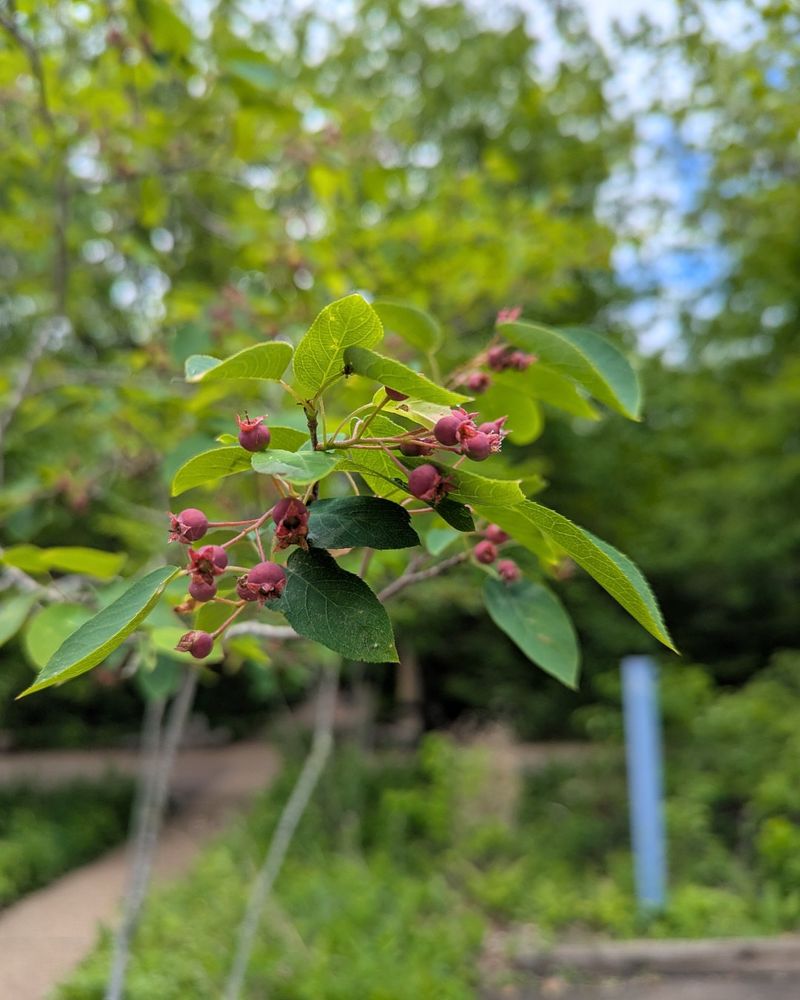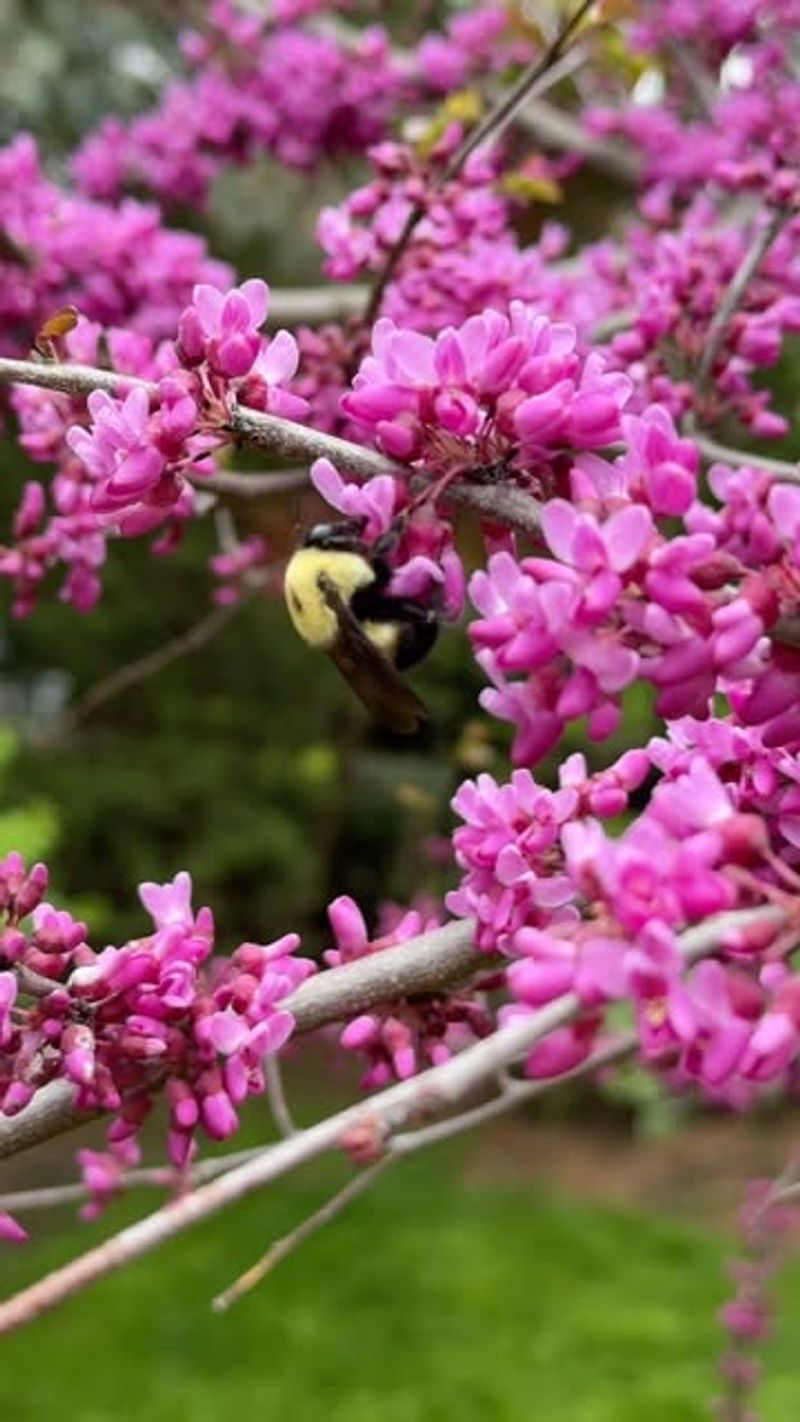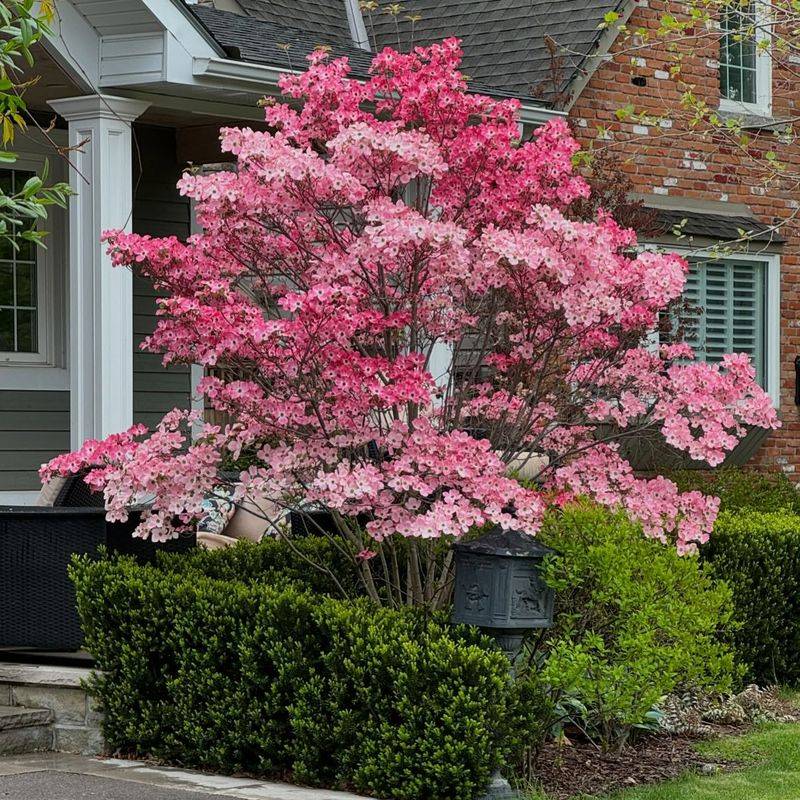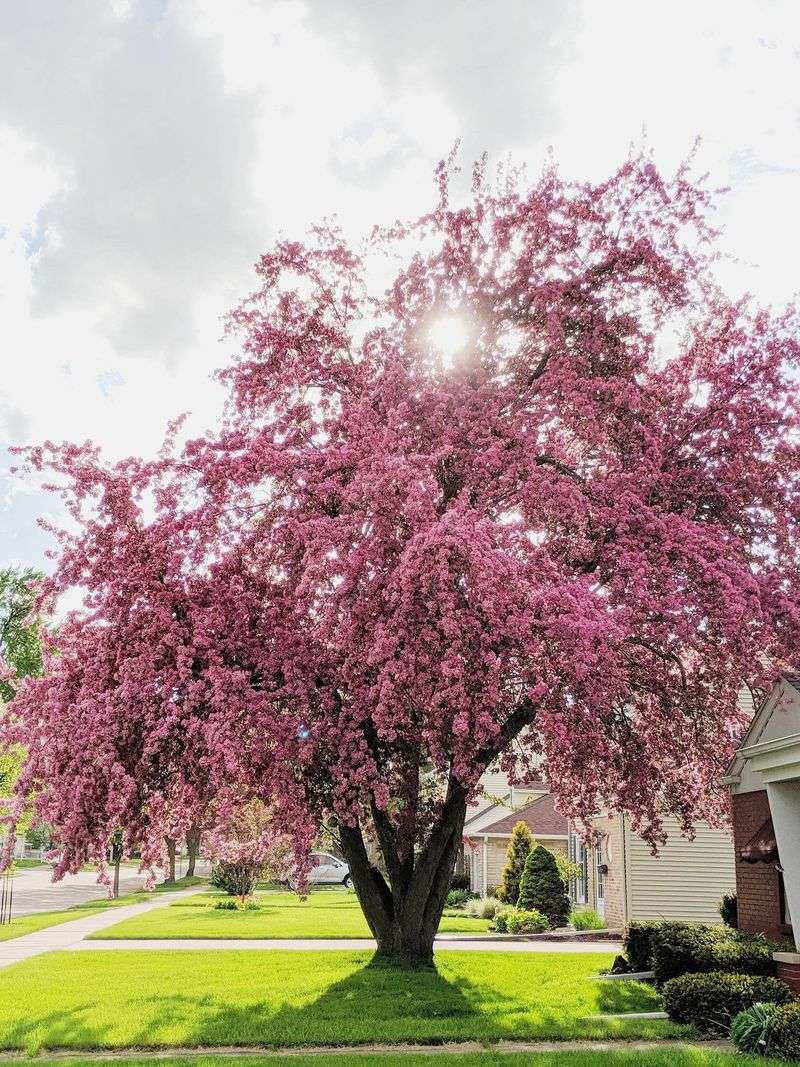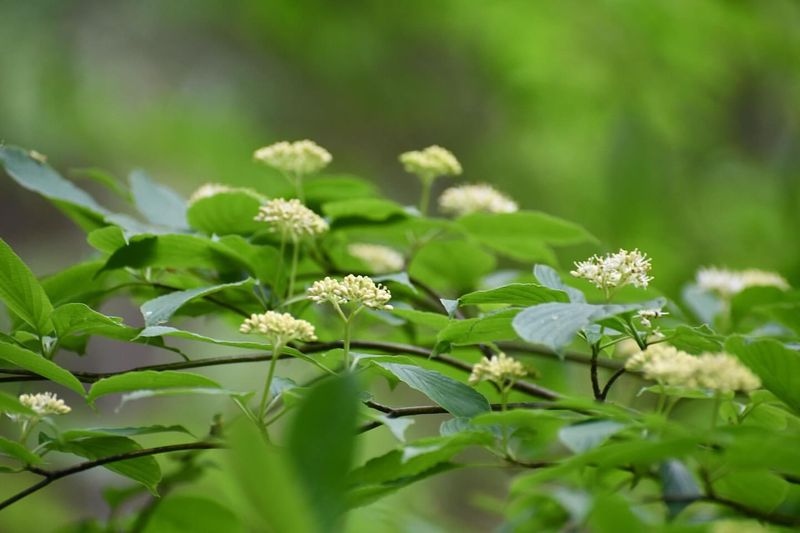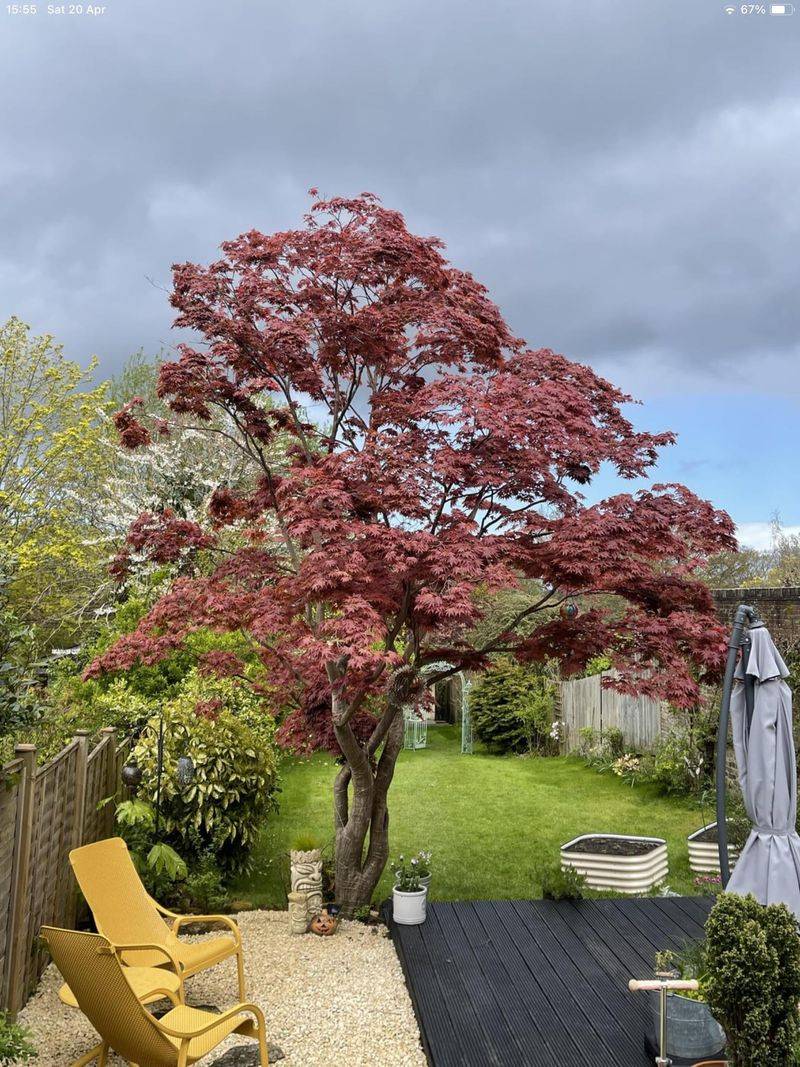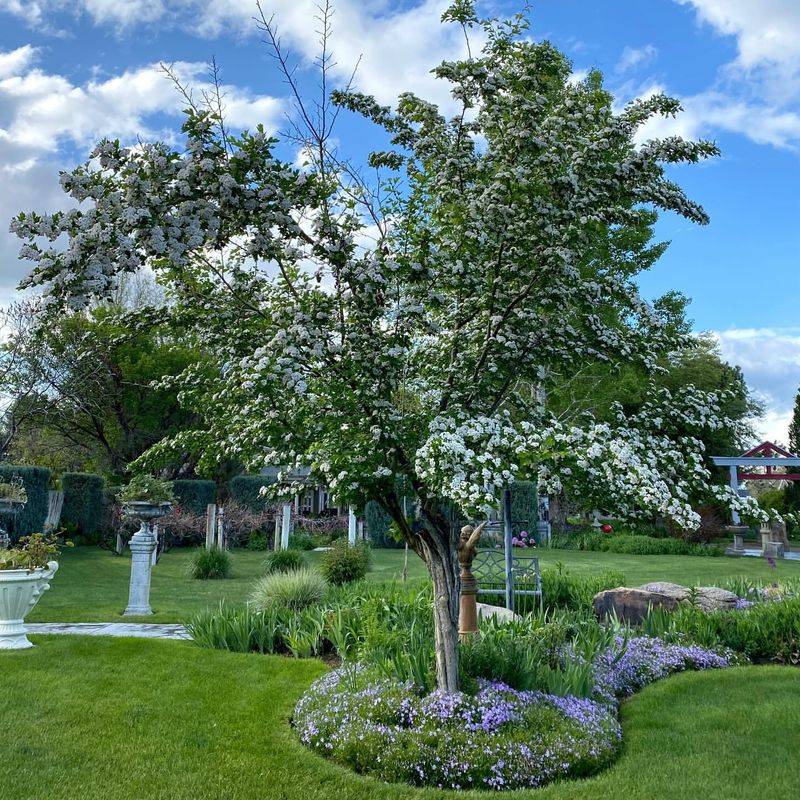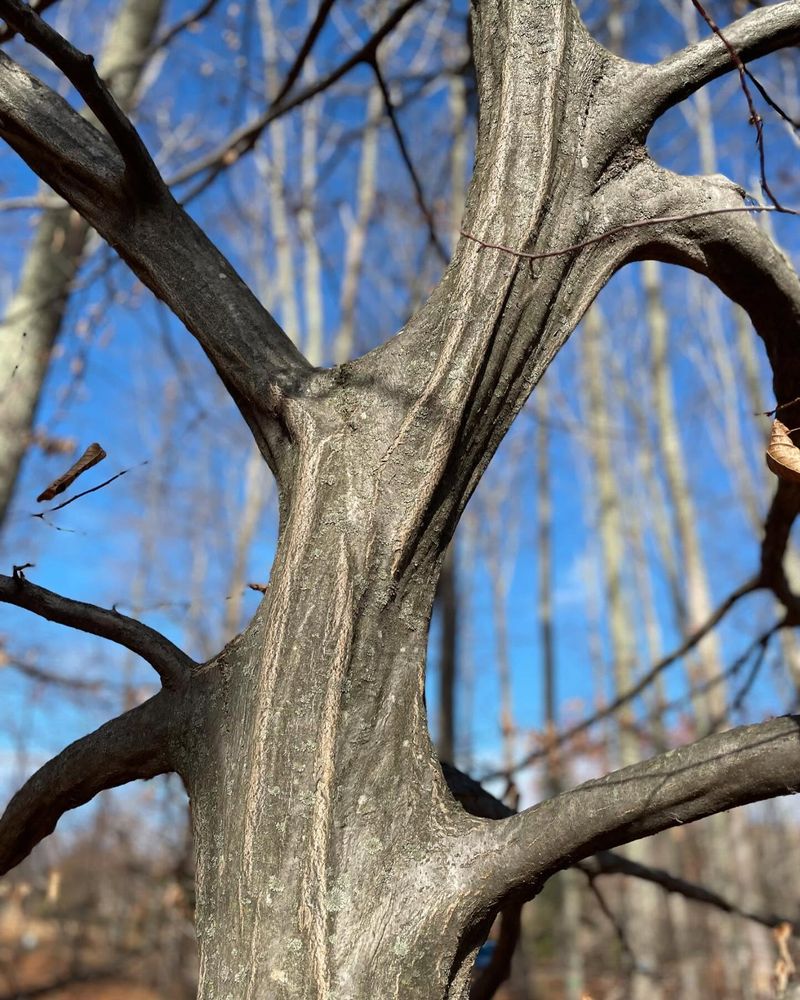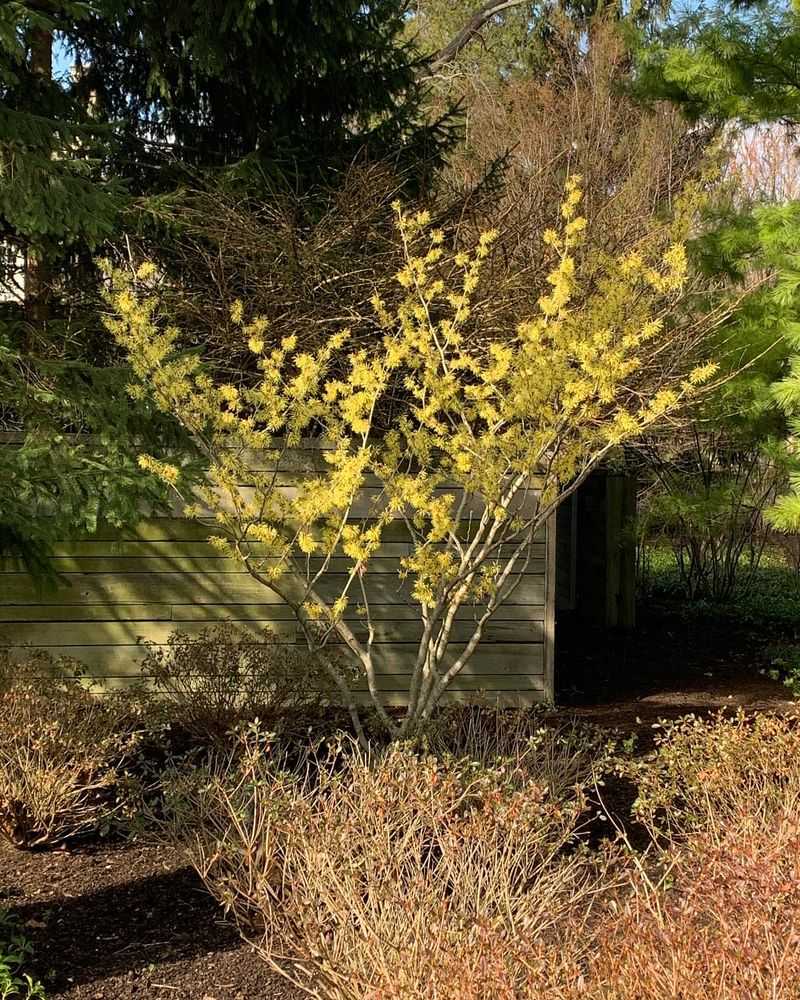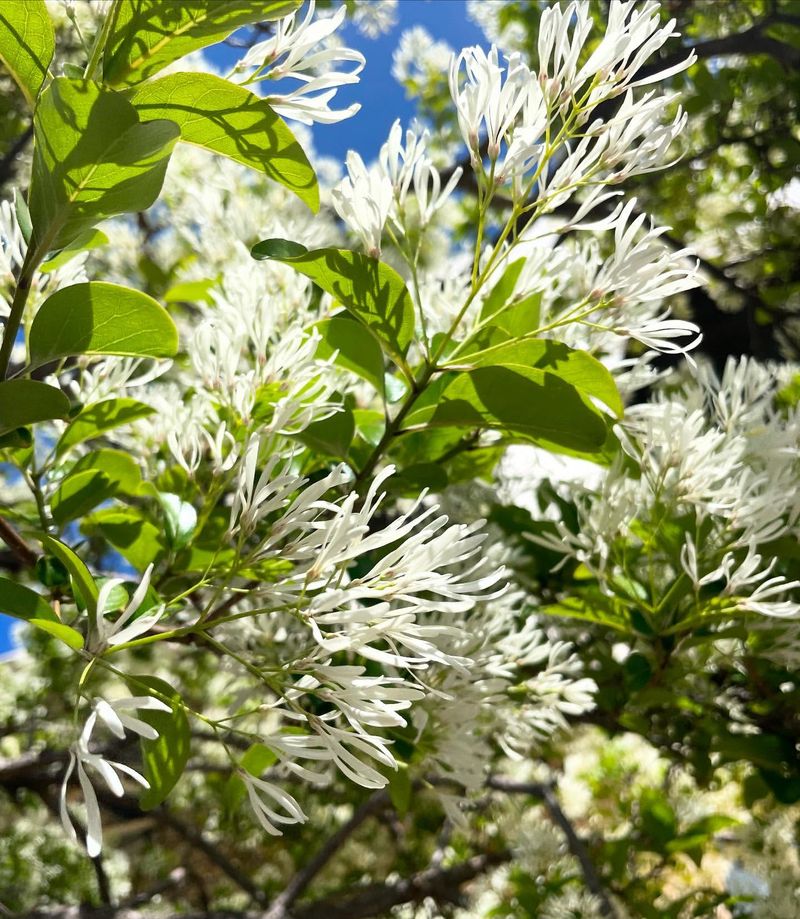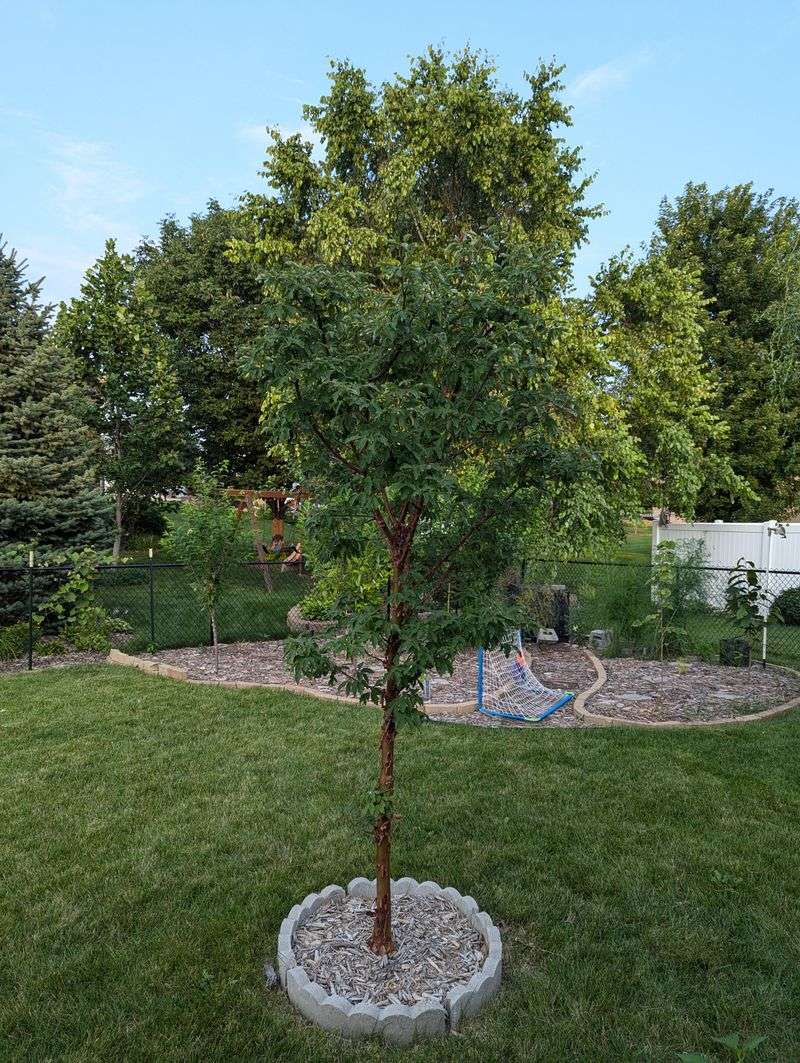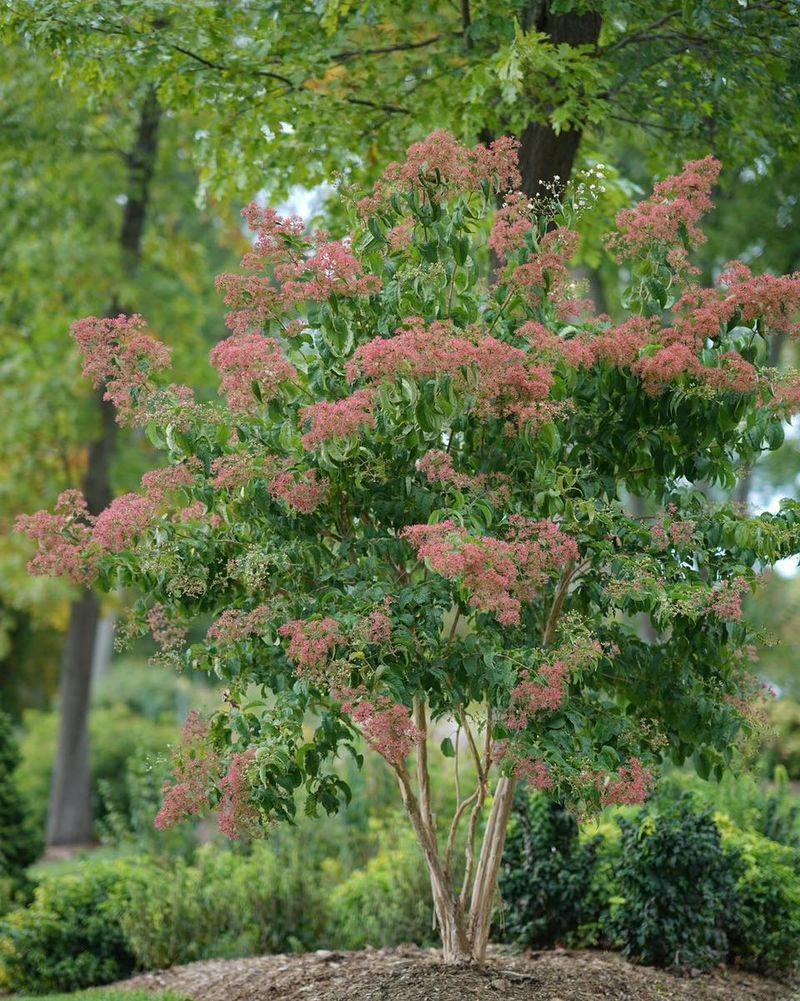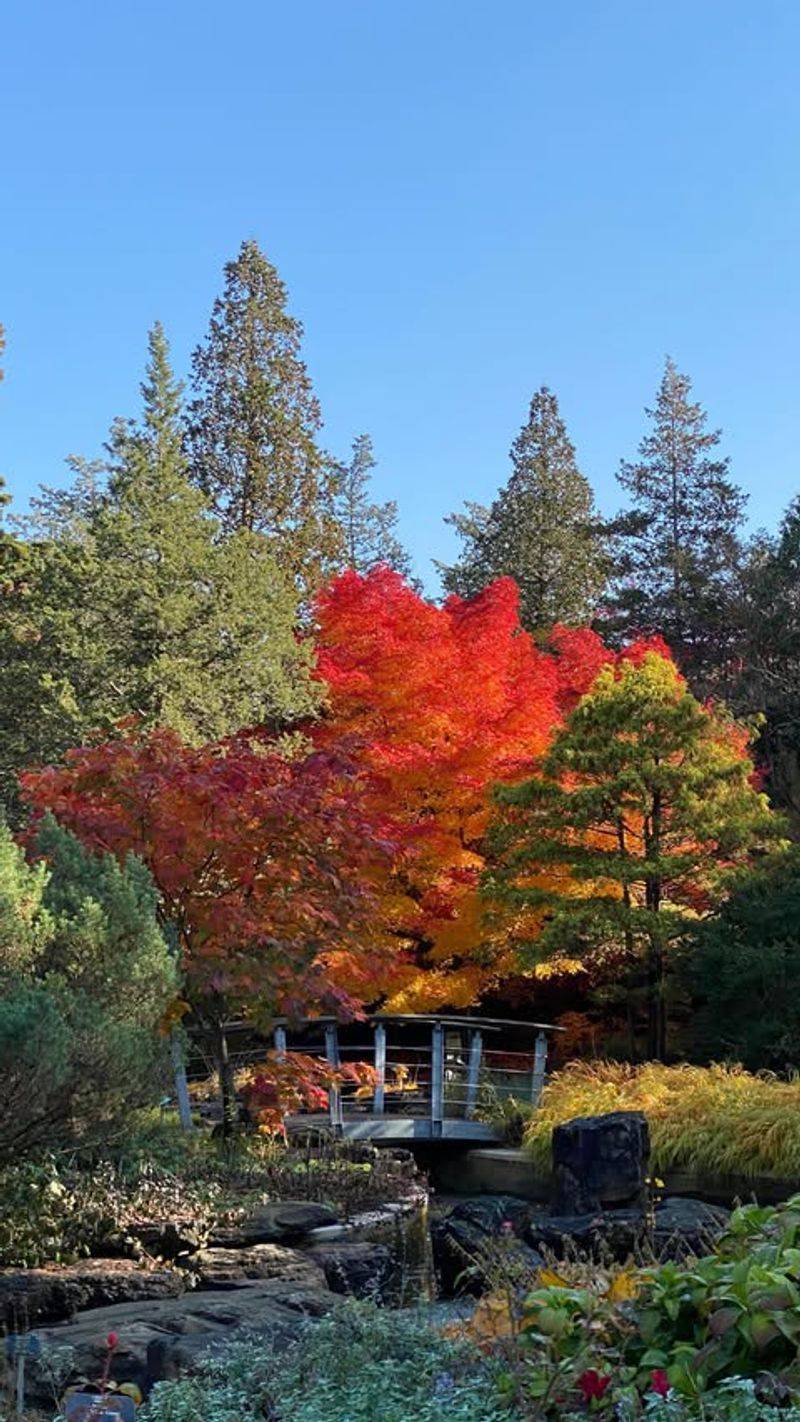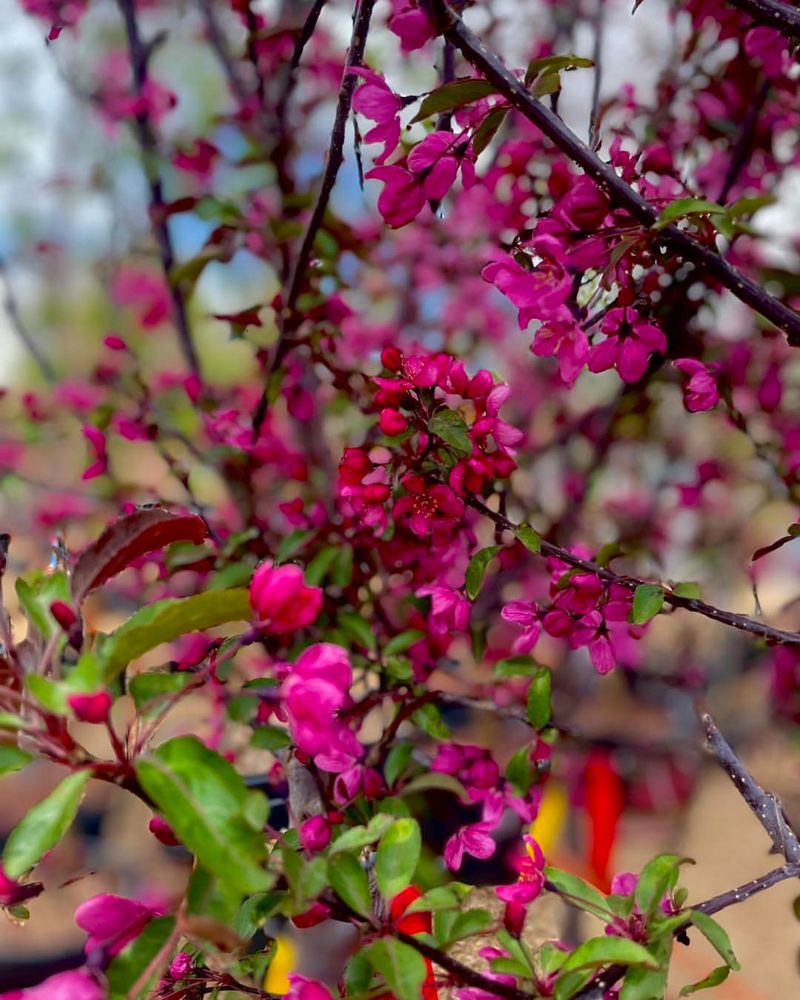Finding the perfect tree for your Illinois backyard can be tricky when space is limited but shade is needed. Small shade trees offer the best of both worlds – they won’t overwhelm your yard but still cast enough shadow to create cool, comfortable outdoor spaces.
These compact beauties are perfect for urban lots, smaller properties, or gardeners who want low-maintenance options that thrive in our Midwest climate.
1. Japanese Maple
Bursting with fiery red foliage, Japanese maples create stunning focal points while offering dappled shade. Their delicate leaves filter sunlight perfectly, creating cool spots beneath their elegant spreading branches.
Most varieties reach just 15-25 feet tall, making them ideal for smaller yards. The slow growth rate means minimal pruning, and their shallow roots won’t damage nearby structures.
Fall brings an explosion of crimson that will make your neighbors jealous!
2. Serviceberry
Native to Illinois, serviceberry trees deliver year-round beauty in a compact package. Spring brings clusters of delicate white flowers, followed by sweet purple berries that birds absolutely adore.
Growing to just 15-20 feet tall, these multi-stemmed trees create a natural umbrella of shade. The smooth gray bark adds winter interest when other plants look dull.
Bonus: you can harvest the berries for jams or pies if you beat the birds to them!
3. Redbud
Ever seen those magical pink blossoms that seem to explode from bare branches in early spring? That’s the Eastern Redbud, a native Illinois charmer that tops out at 20-30 feet.
Heart-shaped leaves form a dense canopy perfect for shading patios or garden benches. Their naturally rounded shape requires minimal pruning to maintain.
Wildlife lovers rejoice – redbuds host over 20 species of butterflies and moths while providing nectar for early-season pollinators.
4. Dogwood
Flowering dogwoods bring spring drama with their showy white or pink blooms that seem to float against the sky. The horizontal branching pattern creates artistic silhouettes and perfect shade patches.
Mature height rarely exceeds 25 feet, making dogwoods perfect for planting near homes. Fall brings bonus beauty with deep burgundy leaves and bright red berries that feed local birds.
Try planting dogwoods along the east side of your yard for morning shade and afternoon sun exposure.
5. Crabapple
Modern crabapple varieties pack major beauty into packages just 15-20 feet tall. Spring erupts with fragrant pink, white or red blossoms that blanket the entire tree.
The dense, rounded canopy creates excellent shade for smaller spaces while disease-resistant varieties like ‘Prairie Fire’ thrive in Illinois conditions. Tiny fruits persist through winter, feeding cardinals and cedar waxwings.
Plant one where you can watch it from a window – the bird activity is better than television!
6. Amur Maple
Looking for blazing fall color in a pint-sized package? Amur maples deliver fiery autumn displays while staying under 20 feet tall. Their multi-stemmed growth habit creates natural privacy screens with dappled shade beneath.
These tough trees handle Illinois winters like champions and tolerate urban conditions that would stress other species. Summer brings tiny red fruits that add visual interest.
Plant one near a deck or patio for a living sunshade that changes with the seasons.
7. Pagoda Dogwood
Unlike its flashier cousin, the Pagoda Dogwood captivates with elegant, tiered branches that create natural layers of shade. Native to Illinois woodlands, it thrives in partial shade and reaches just 15-25 feet tall.
Creamy white flower clusters appear in late spring, followed by blue-black berries on red stems. The distinctive horizontal branching pattern looks stunning when lit from below.
Woodland gardens come alive with this understated beauty that supports local wildlife and looks gorgeous year-round.
8. Ironwood
Tough as its name suggests, the Ironwood (American Hophornbeam) packs incredible strength into a modest 25-40 foot frame. Native to Illinois forests, it creates dense shade with its fine-textured leaves.
Hop-like seed clusters dangle from branches in fall, adding unique visual interest. The fluted, muscular trunk develops character with age, looking stunning in winter.
Ironwoods handle road salt, air pollution, and compacted soil better than most trees – perfect for challenging urban sites.
9. Hawthorn
Thornless hawthorn varieties offer the best of both worlds – beautiful white spring flowers and excellent shade without the prickly hazards. Most stay under 25 feet tall with spreading canopies perfect for creating backyard oases.
‘Winter King’ and ‘Washington’ cultivars produce bright red berries that persist through winter, feeding birds when food is scarce. The dense branching pattern creates excellent wind protection.
Plant hawthorns where you can appreciate their four-season appeal from indoors too.
10. American Hornbeam
Smooth, muscle-like bark gives the American Hornbeam its nickname “musclewood” – a conversation starter in any garden. This Illinois native grows slowly to 20-30 feet, developing a dense, rounded canopy perfect for shading patios.
Fall brings a spectacular mix of orange, red and yellow foliage. The extremely hard wood (hence the name “ironwood”) resists damage from ice storms and heavy winds.
Low maintenance and naturally pest-resistant, it’s a worry-free choice for busy homeowners.
11. Witch Hazel
Quirky and underused, witch hazels bloom when nothing else dares – some varieties flower in late winter while snow still covers the ground! Growing just 15-20 feet tall, they form vase-shaped canopies perfect for smaller yards.
Spider-like yellow or orange flowers emit a sweet fragrance that carries on winter air. The zigzag branching pattern creates interesting shadows and dappled shade during summer months.
Native varieties handle Illinois conditions beautifully while supporting local wildlife.
12. Fringe Tree
Dripping with cloud-like white flowers in spring, the Fringe Tree creates an unforgettable display while staying under 20 feet tall. The fleecy blooms give way to olive-like blue fruits that birds devour.
Glossy leaves create excellent summer shade before turning golden yellow in fall. Male trees produce showier flowers, while females offer fruit – consider planting both for maximum benefits.
Remarkably pollution-tolerant, fringe trees thrive in urban Illinois gardens where other species struggle.
13. Paperbark Maple
Cinnamon-colored bark that peels in paper-thin layers makes the Paperbark Maple a showstopper even in winter. Growing slowly to 20-30 feet, it creates artistic silhouettes and moderate shade patches.
The trifoliate leaves turn brilliant orange-red in fall, rivaling any autumn display in Illinois. Drought-tolerant once established, it requires minimal watering compared to other maples.
Position this beauty where winter sunlight will illuminate its exfoliating bark for maximum drama.
14. Seven-Son Flower
Relatively new to American gardens, the Seven-Son Flower tree combines multiple seasons of interest in a package just 15-20 feet tall. Late summer brings clusters of fragrant white flowers when little else blooms.
After flowering, bright red sepals develop, creating the illusion of a second bloom period. The exfoliating bark reveals cinnamon underbark that stands out in winter landscapes.
Butterflies swarm to the nectar-rich flowers, bringing movement and life to late summer gardens.
15. Korean Maple
Less finicky than Japanese maples but equally beautiful, Korean maples bring exceptional fall color to Illinois gardens while staying under 25 feet tall. The star-shaped leaves create a fine-textured canopy that filters sunlight beautifully.
Remarkably heat and cold tolerant, they handle Illinois’ temperature swings better than many other ornamental trees. The naturally rounded shape requires minimal pruning to maintain.
Try planting one where afternoon shade will protect delicate perennials from summer heat.
16. Cornelian Cherry Dogwood
Yellow flowers appear in earliest spring on this unique dogwood relative, brightening the landscape when most plants still sleep. Growing slowly to just 15-20 feet, it develops a rounded canopy perfect for small-space shade.
Edible cherry-like fruits ripen to bright red in summer – they make excellent preserves with a sweet-tart flavor. The exfoliating bark adds winter interest when the garden looks bare.
Plant one where spring morning sun will highlight those cheerful yellow blooms.
17. Golden Rain Tree
Summer-blooming trees are rare treasures, and the Golden Rain Tree delivers spectacular yellow flower panicles in July when most trees have finished flowering. Growing 20-30 feet tall, it creates moderate shade perfect for understory plants.
Paper lantern-like seed pods follow the flowers, turning from green to tan to russet through fall and winter. The compound leaves cast dappled shade that won’t completely darken areas beneath.
Fast-growing compared to many small trees, it provides shade benefits sooner.
18. Prairifire Crabapple
Disease resistance makes ‘Prairifire’ crabapple a standout choice for Illinois gardens plagued by apple scab or cedar apple rust. Growing just 15-20 feet tall, it creates a perfect shade umbrella for smaller spaces.
Deep pink to red flowers cover branches in spring, followed by small, persistent fruits that birds love. The reddish-purple leaves hold their color all summer, adding depth to the landscape.
Plant where spring breezes will carry its sweet fragrance toward patios or windows.

